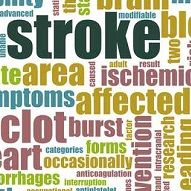Article
Robots Helping Stroke Patients at Home
Author(s):
A robotic device designed for use in the home could improve outcomes for stroke survivors.

A robotic device designed for use in the home could improve outcomes for stroke survivors, according to the results of a recent study. Authored by SN Housley of the Department of Physical Therapy at Georgia State University, and colleagues, a paper describing the study was published in the Austin Journal of Cerebrovascular Disease & Stroke recently.
“This study aimed to examine the efficacy of using a home-based, tele robotic-assisted device to: Improve functional ability, reduce depression symptoms, and create a satisfactory experience, increase access to, and monitor participant utilization of cost efficient rehabilitation when compared to cost of clinic-based therapy for rural stroke survivors,” say the authors.
Twenty study participants, all rural veterans who had suffered a stroke in the previous 24 months, were provided either a foot or hand home-based robotic rehabilitation device. All 20 underwent pre-assessment before receiving the device; the researchers determined upper body extremity functional limitations, lower extremity functional status, and completed both the Functional Independence Measure (FIM), and the Center for Epidemiologic Studies Depression (CES-D) scale questionnaire.
The devices the participants used were the Hand Mentor (HM) and the Foot Mentor (FM), and were “designed for use by individuals with residual upper and lower extremity impairments after stroke,” say the authors. The go on to explain, “The participants use their affected wrist or ankle to complete game-like training programs to challenge motor control initially at an easy level, requiring only a small degree of wrist or ankle motion.” As the participant improves, the “games” become more challenging.
In addition to considering how the robotic devices impacted patient outcomes, the researchers also examined the cost-efficiency and utilization of the devices. At the end of the study, the researchers say “large heterogeneity in device utilization in device utilization was observed,” and that the device “reveals an average of $2,352 (64.97%) in savings compared to clinic-based therapy per stroke survivor.”
There were three key findings: home-based, robotic-assisted telerehabilitation reduces improves functional outcomes, allows for expanded access to therapy, and provides a substantial cost-savings, compared to traditional, clinic-based therapy. The researchers conclude, “Home-based, robotic-assisted therapy reduced costs, while expanding access to a rehabilitation modality for stroke survivors who would not otherwise have received care.”
Further Coverage:
TechSectors - Medical Device: Teaching the Brain to Take the Right Step





